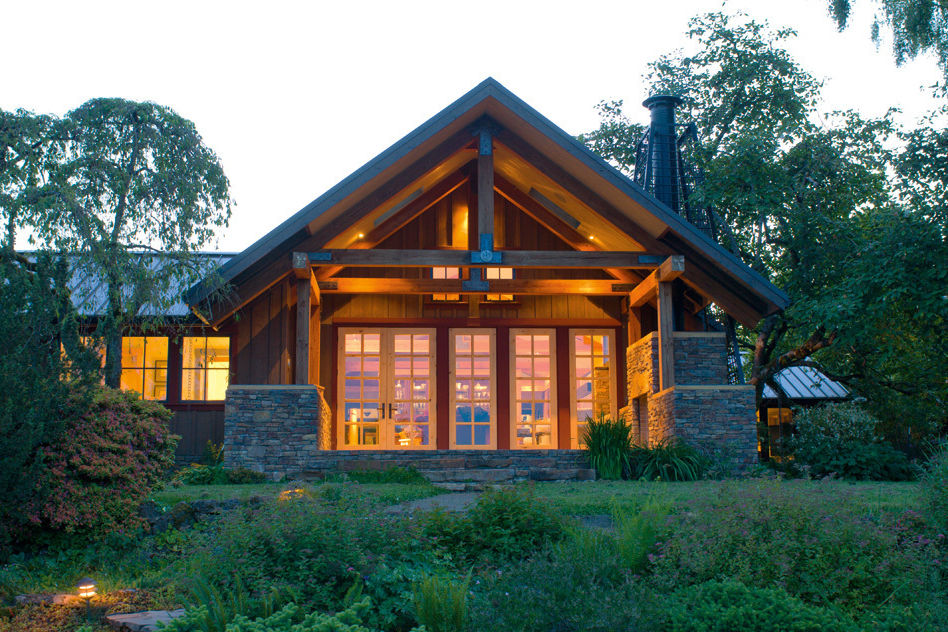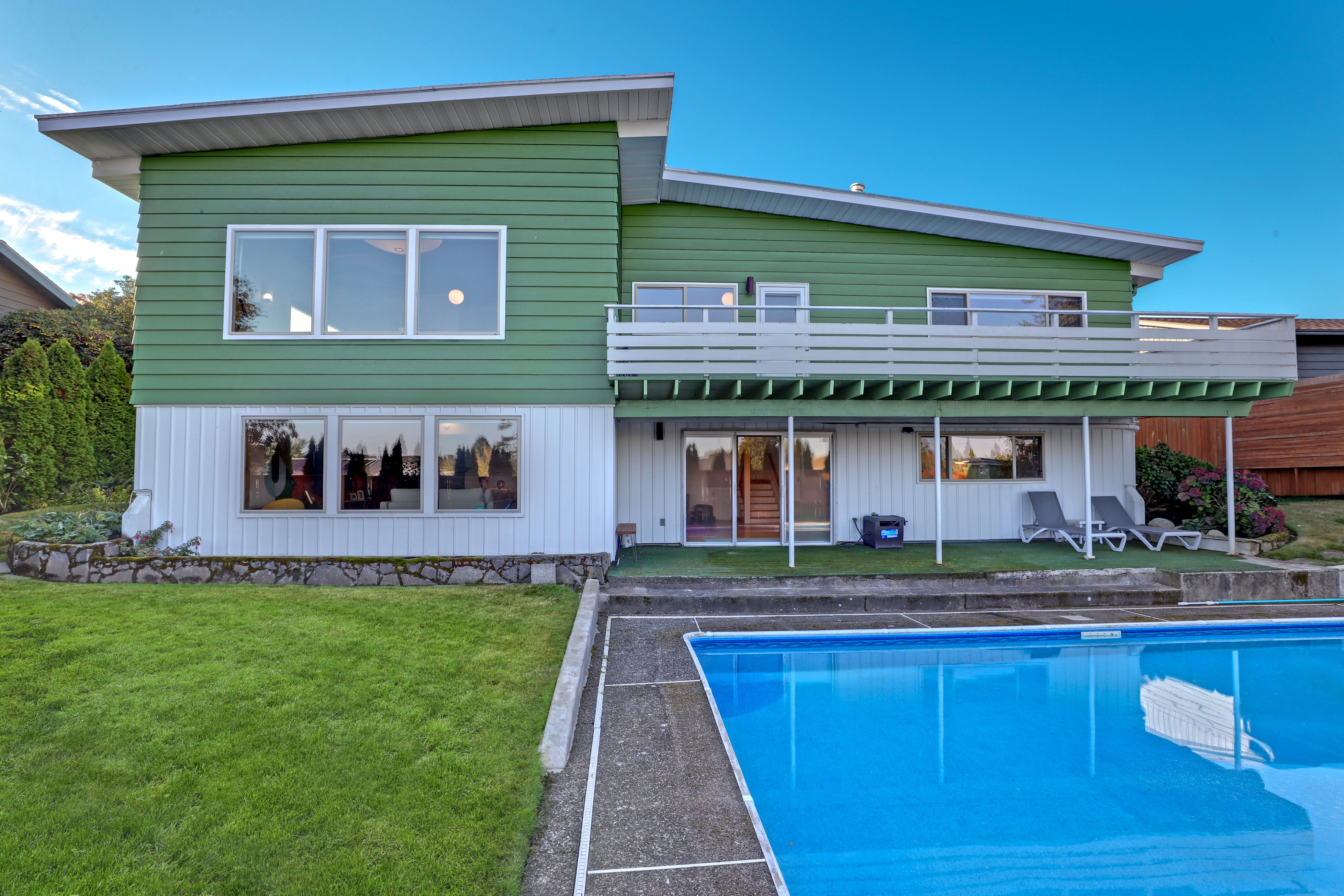Perfect Pitch
WHEN GREGG TAKASHIMA and Laura Hollister-Takashima first met with their architects to discuss remodeling their newly purchased house, the couple’s ideas were about as far apart as a sumi ink drawing and a Corot landscape. In place of the aging daylight ranch, Gregg envisioned a contemporary update of a Japanese lodge. Laura, meanwhile, imagined a rambling Tuscan villa.
“We said there was no way we could do both,” recalls Julia Wood, one of their architects, laughing.
Happily, Wood and Simon Tomkinson, husband-and-wife principals of Northeast Portland-based Litmus Design and Architecture, found a third path: a residence that blends modern simplicity and rustic warmth, drawing inspiration from Asian architecture and the local landscape alike. With its pointy-capped great room, rambling wings and periphery of porches and patios, the hybrid domain possesses a style that Laura half-jokingly refers to as “Tuscan-Northwest-Japanese”—which seems about right, although its rugged formality, locally sourced materials and recurring geometric motifs also seem loosely cribbed from Frank Lloyd Wright’s pattern book. And as Wright might have done, the Takashimas and their architects designed the house to fit the very special property on which it sits.
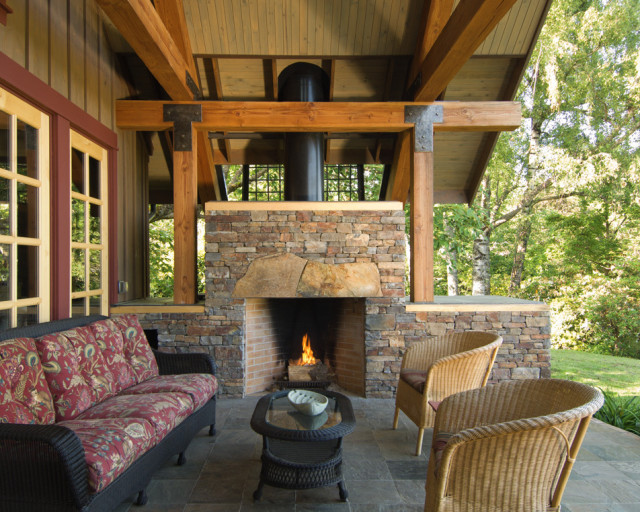
Laura first jogged past the sloping, three-acre lot, located in the Mountain Park development of Southwest Portland, in 1995. (At the time, she and Gregg lived just blocks away, in a newly built house that was walking distance from Gregg’s veterinary office.) Laura, an avid gardener who then ran her own wholesale fabric company, was captivated by the beautiful old rhododendrons and magnolias nestled around the house, and especially by the curving set of stone stairs that led to the front door. “I’d been dreaming about that stairwell since I was a girl,” she says.
Five years later, when a neighbor called Laura to report that the owners of the house “with the specimen garden” had passed away, she and Gregg started puzzling together the property’s history. The garden, they learned, was the creation of Molly Grothaus, an esteemed horticulturalist who’d led an effort in the late 1970s to conserve the nearby Berry Botanic Garden, a superb (and now, public) collection of rare and native plants established by local plant enthusiast Rae Selling Berry. Molly and her husband, Louis, an engineer, had built the modest ranch house from a Sears & Roebuck kit in 1952. Among the hundreds of rare plants in their garden was a Wilsonii magnolia tree that, according to the Grothauses’ heirs, represented one of the only examples of its species in North America.
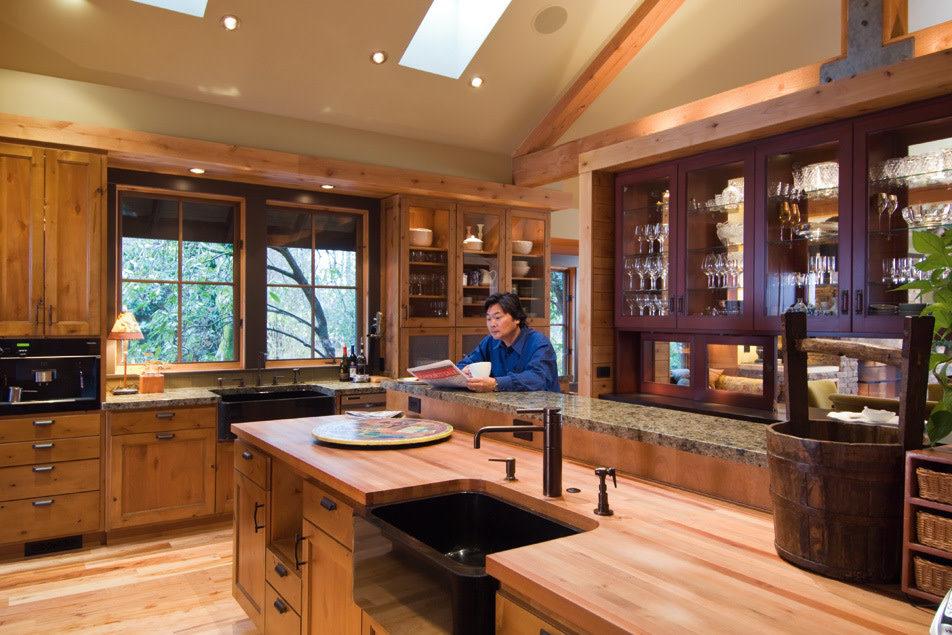
With its prime location, beautiful views and a house plan that put most of the living space on the main level, the property seemed well-suited to serve the Takashimas in their forthcoming retirement years. So Laura left a note, then another, in the mailbox, inquiring about a sale. Weeks passed with no reply, until finally one Friday night, after packing for a weekend trip to Sunriver, Laura swung by the Grothaus residence and saw that a for-sale sign had finally gone up. Laura and Gregg’s real estate agent agreed to meet them for an 11:30 p.m. flashlight tour, and they faxed in a full-price offer the next day. “We got really lucky,” says Laura, backlit by a twilight cloudscape seen through the French doors of her new living room.
Unfortunately, the Takashimas and their architects soon discovered there was little of the existing house that they wanted to keep. As Wood recalls, “It had a lot of small rooms that had no relationship to the site or to views, as is typical of a ranch-style home.” The low-ceilinged interior barely interacted with the lovely garden outside. And the gable ends of the roof faced north-south, as if the building was averting its gaze from the galloping views to the east.
The agreed-upon solution was to completely tear down the house and build a new structure atop the basement level, keeping the footprint more or less intact to preserve the landscaping.
In a traditional Japanese farmhouse, communal and public activities typically occur in a main hall. Emulating that arrangement, Tomkinson and Wood replaced most of the main floor with a lofty great room, where heavy fir trusses that support the steeply pitched roof are open to the living, dining and kitchen areas below. Separate bedroom and library wings are arrayed on the west and south sides of the house, while the basement level holds a modest guest suite, office, media room and wine cellar. In another bold reconfiguration, the architects moved the home’s main entry from its east to its south wall. Whereas visitors once entered the house with their backs to the prime view, now the entry procession leads gradually through the main living areas, culminating in an east-facing bank of tall windows and French doors that, on a clear day, frame Mount Hood.
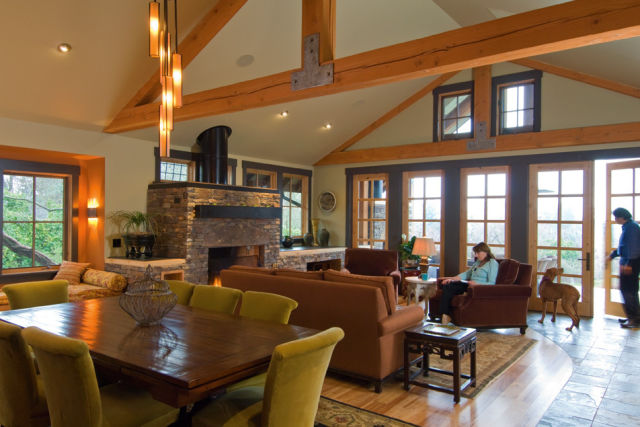
Image: Jon Jensen
“We believe in sustainability, using fewer resources to get the results you want, so our designs tend to have a minimalist or modernist feel,” Wood explains, referring to a portfolio that includes the interiors of Café Wonder in the historic Wonder Ballroom on NE Russell Street and the Ten-01 restaurant in the Pearl District’s Henry building. Of course, achieving that ideal of physical economy can require some compromises—such as doing away with a perfectly usable structure. To reduce the impact of the demolition, tons of retired building materials were trucked to the Rebuilding Center; and Wood and Tomkinson even nabbed some of the discarded Oregon red oak flooring for their own ’50s-ranch remodel.
But to these architects, respect for the environment means more than conserving natural resources; expressing a sense of place is just as important. To that end, despite its clear references to Japanese architecture, the Takashima residence makes no pretense that the peak in the distance is actually Mount Fuji. “We definitely localized it,” Wood says. To wit, rosy-hued stone from nearby Montana, quarried from a piece of property Gregg and Laura own, forms indoor and outdoor fireplaces. Old-growth fir timbers, used for prominent structural members such as porch posts, create a feeling of richness and authenticity, while younger, lighter-weight fir timbers support the rest of the structure, a move that reduces the home’s footprint on the earth.
“It’s a very handsome house,” says Laura. “Every man who walks inside loves it.” But the house has female admirers, as well, including Julia Grothaus Vea—Molly and Louis Grothaus’s daughter—who, when she came for a visit, paused before the new, east-facing roof gable. “She said, ‘That’s what my mother always wanted,’” Laura recalls.
Molly Grothaus would have also likely appreciated the fact that nearly all of the plants she tended over the years remain precisely where she placed them—a fitting tribute to the woman who saved Rae Berry’s garden three decades ago, not to mention a treasured gift that Laura and Gregg have given to themselves, especially when the scent of magnolia blossoms wafts through the living room windows in the spring.
